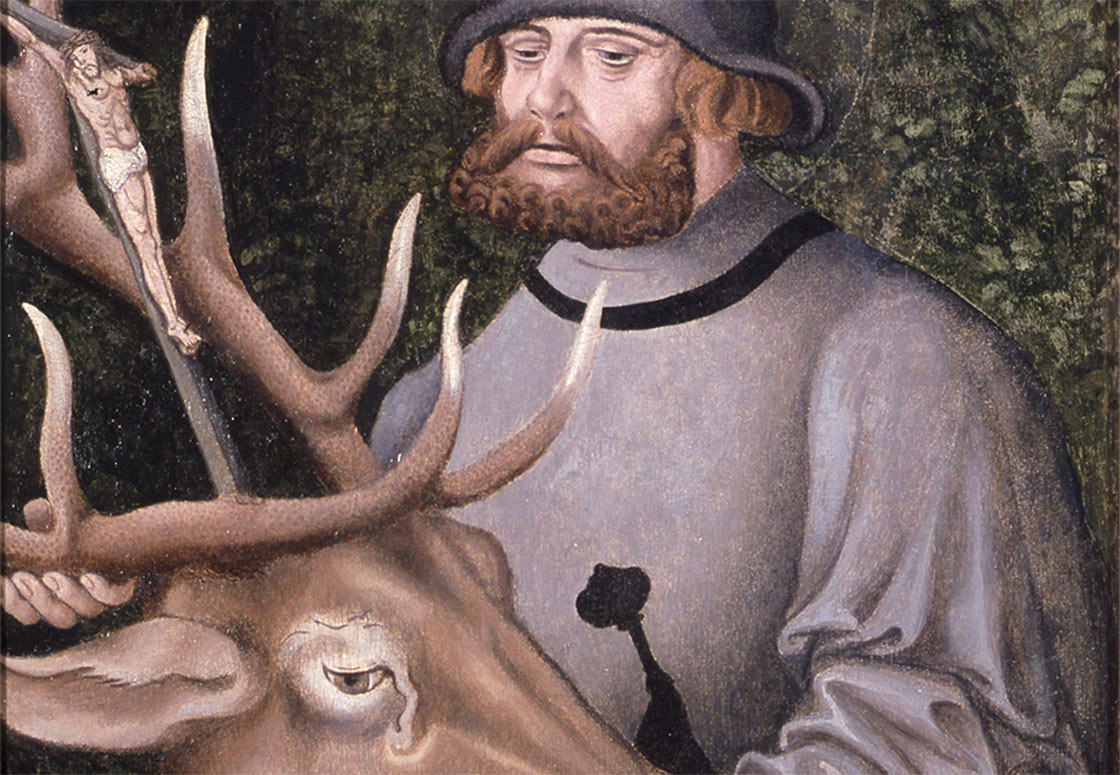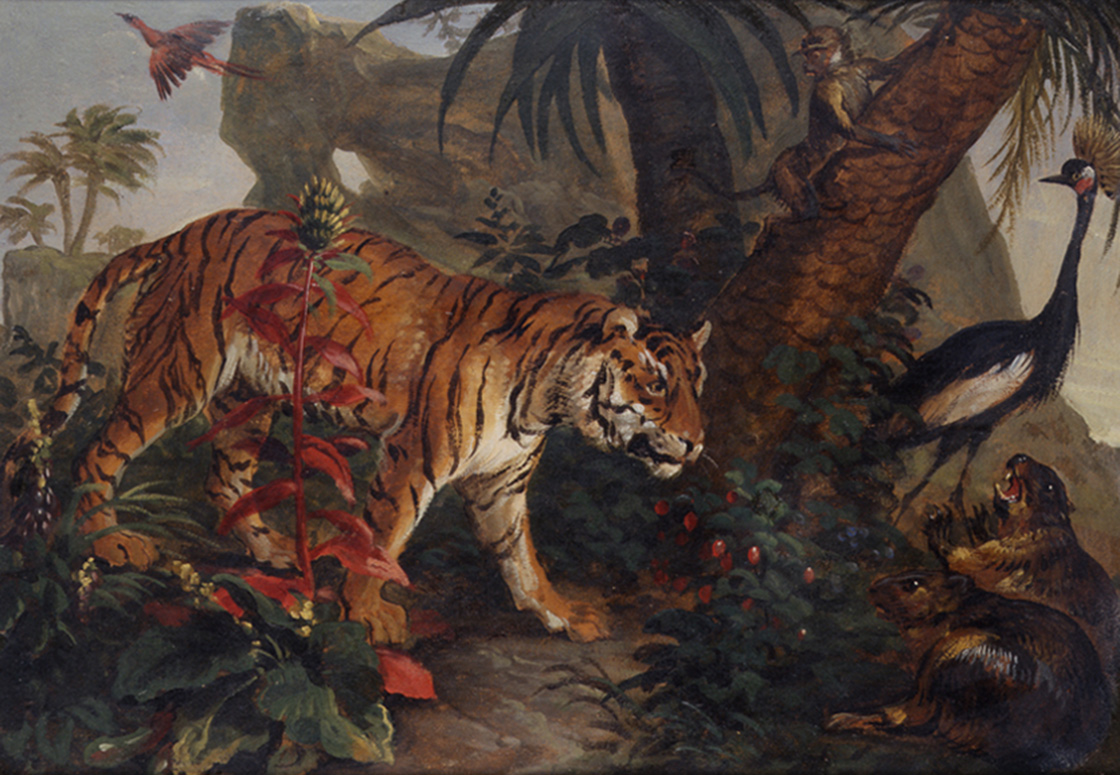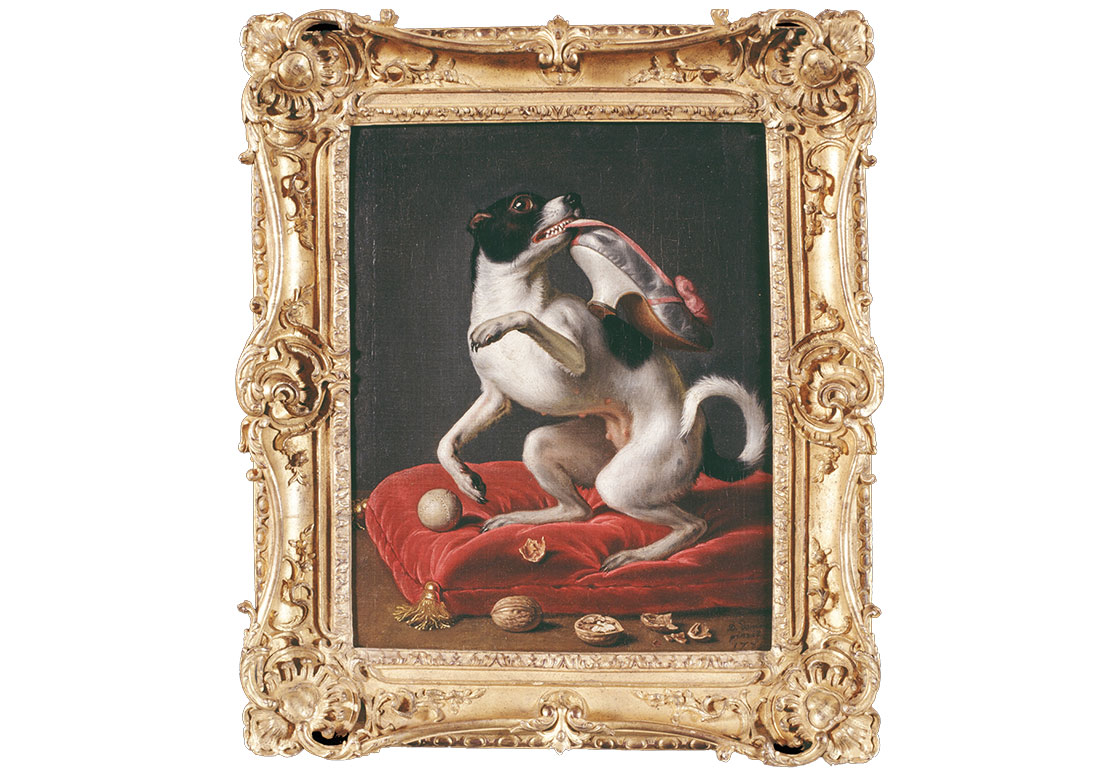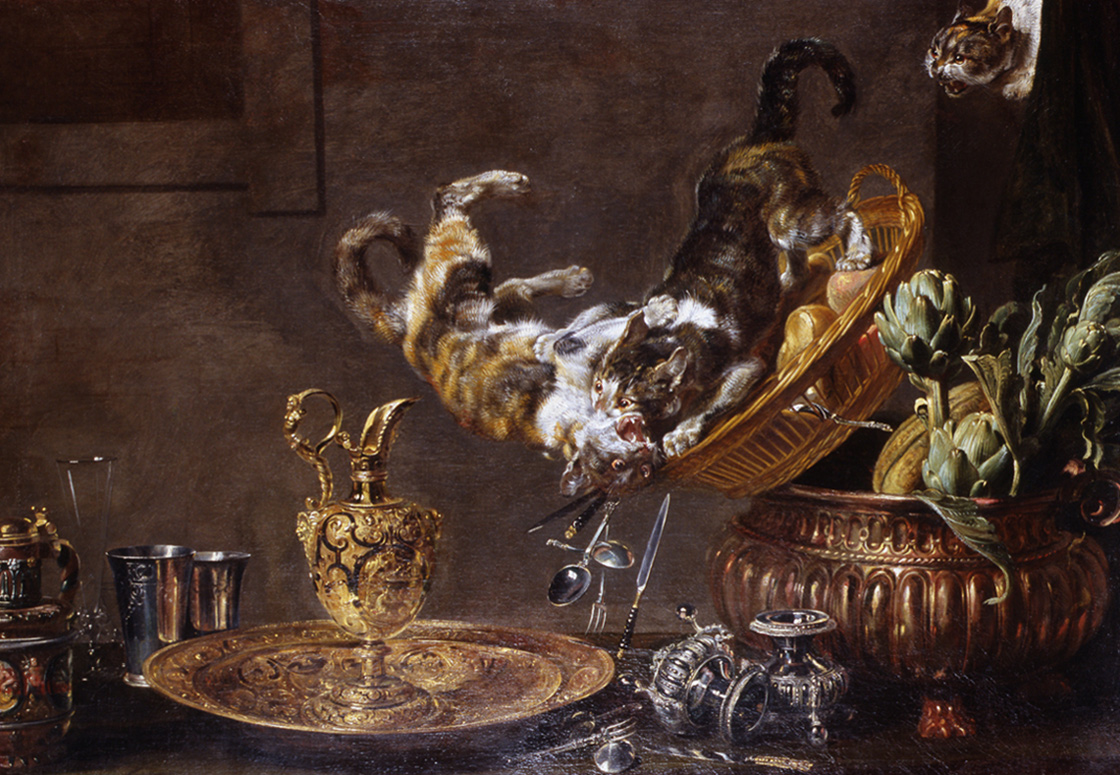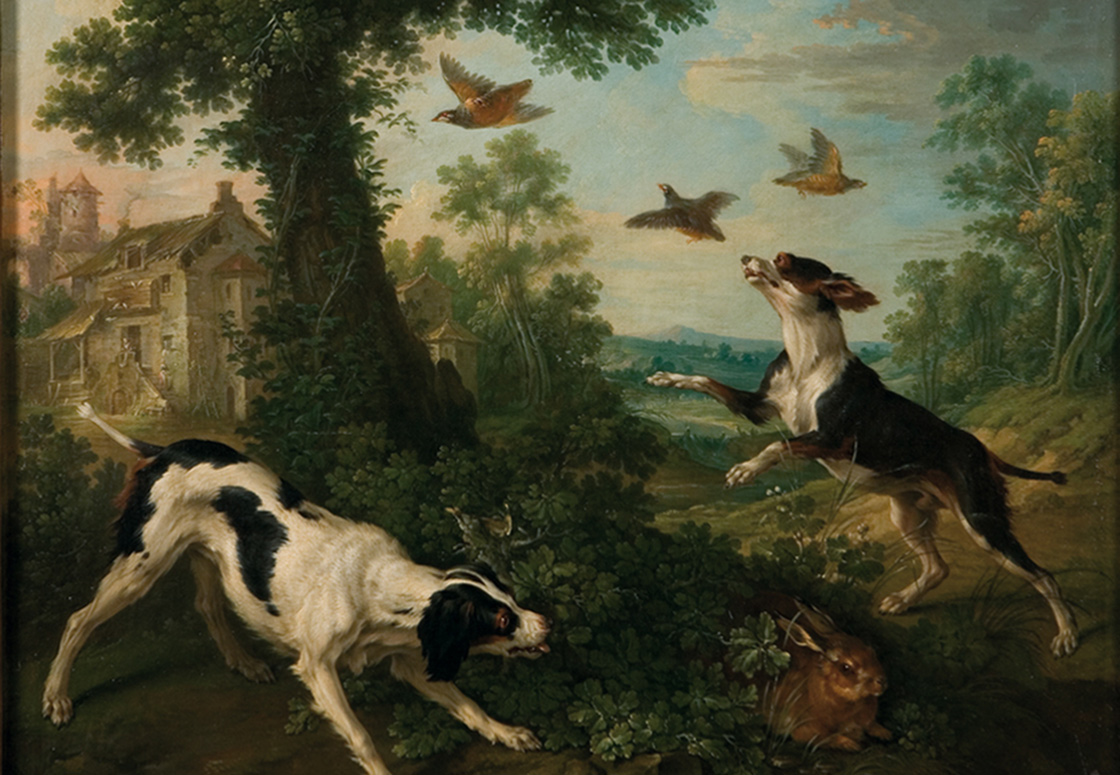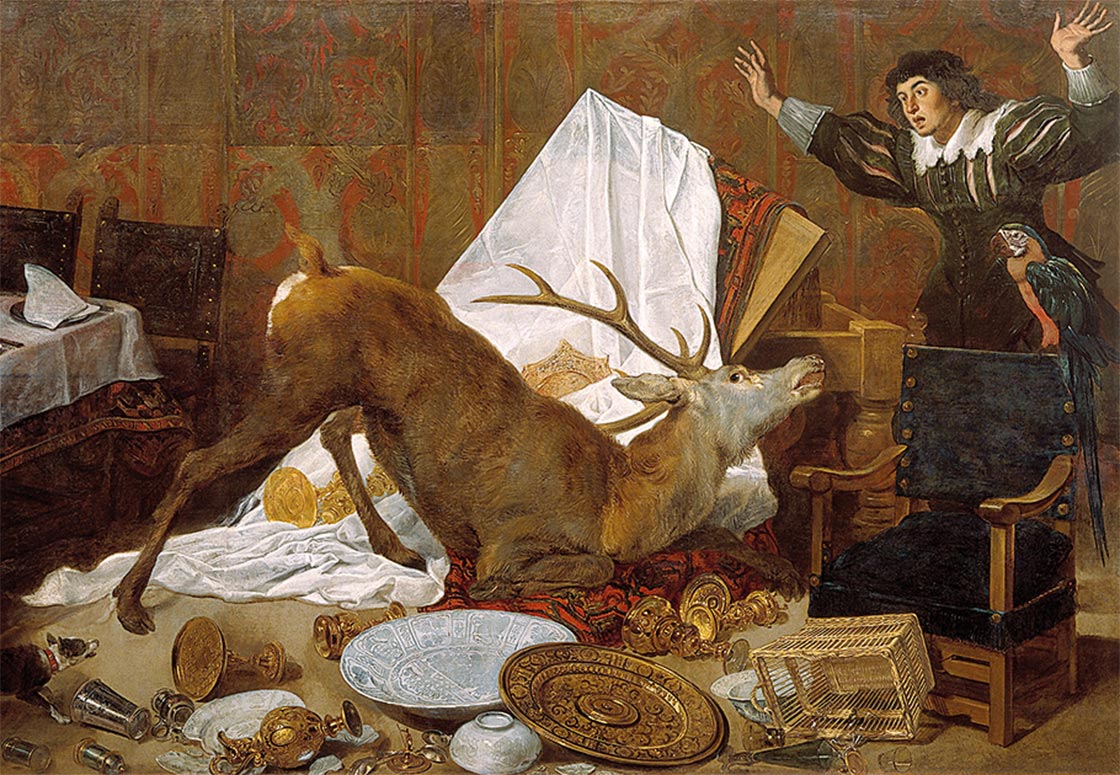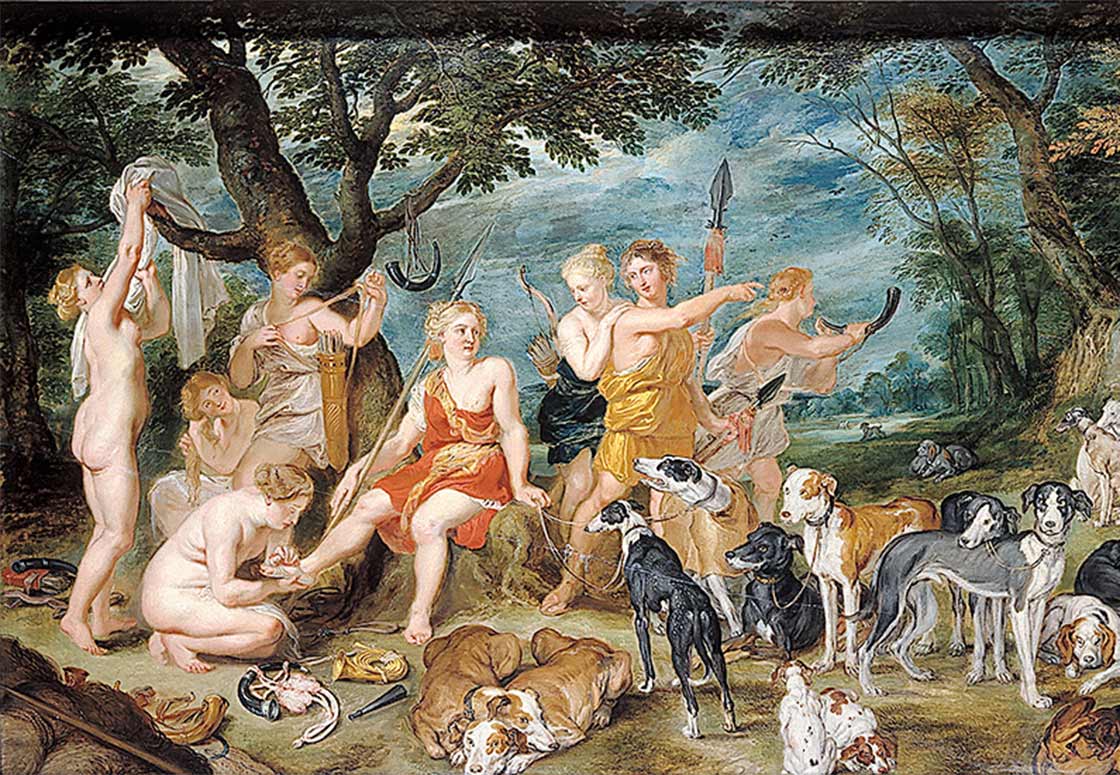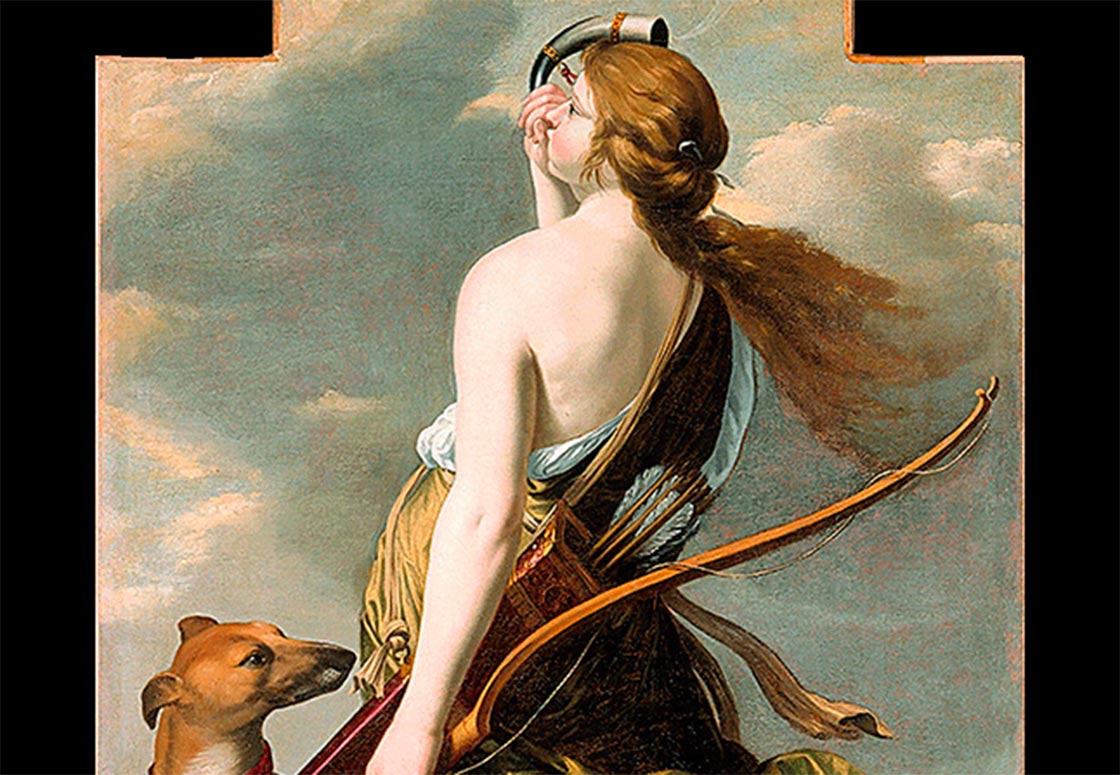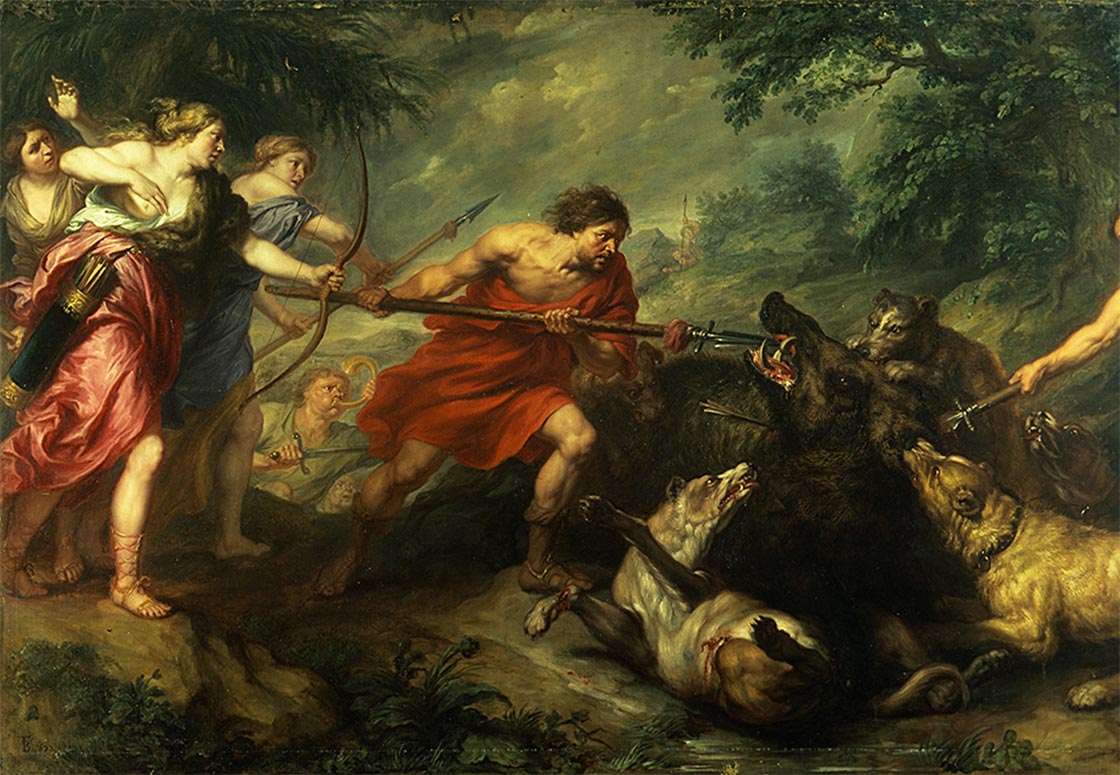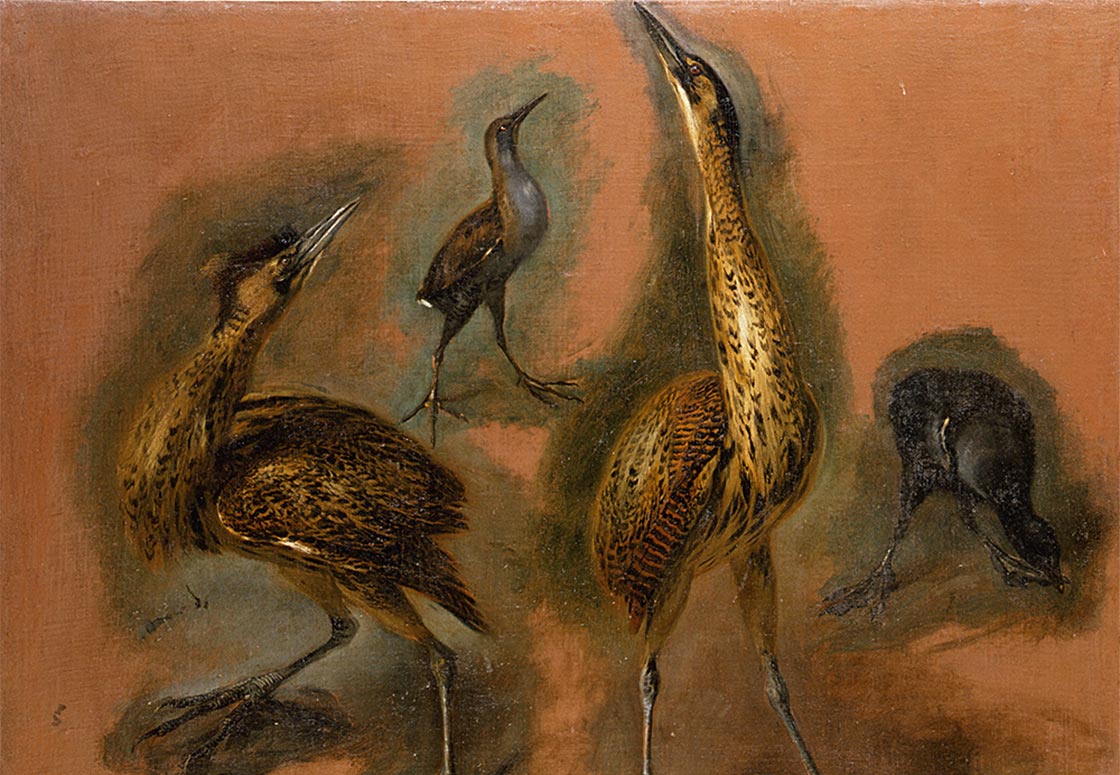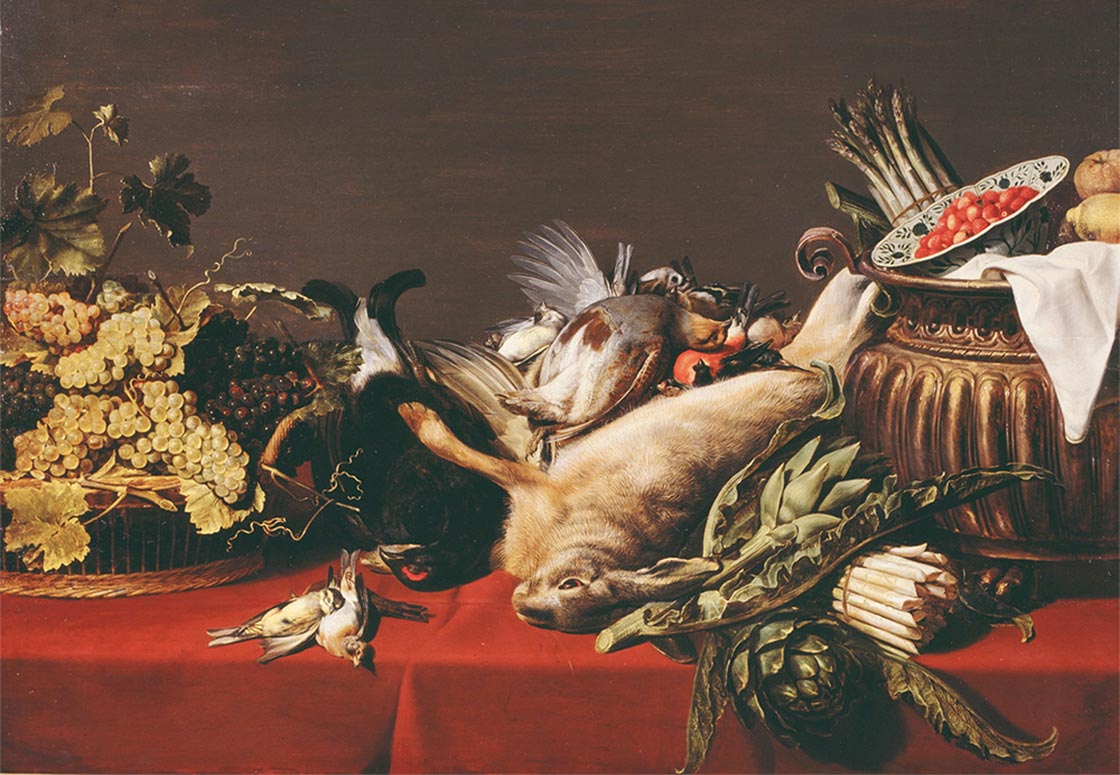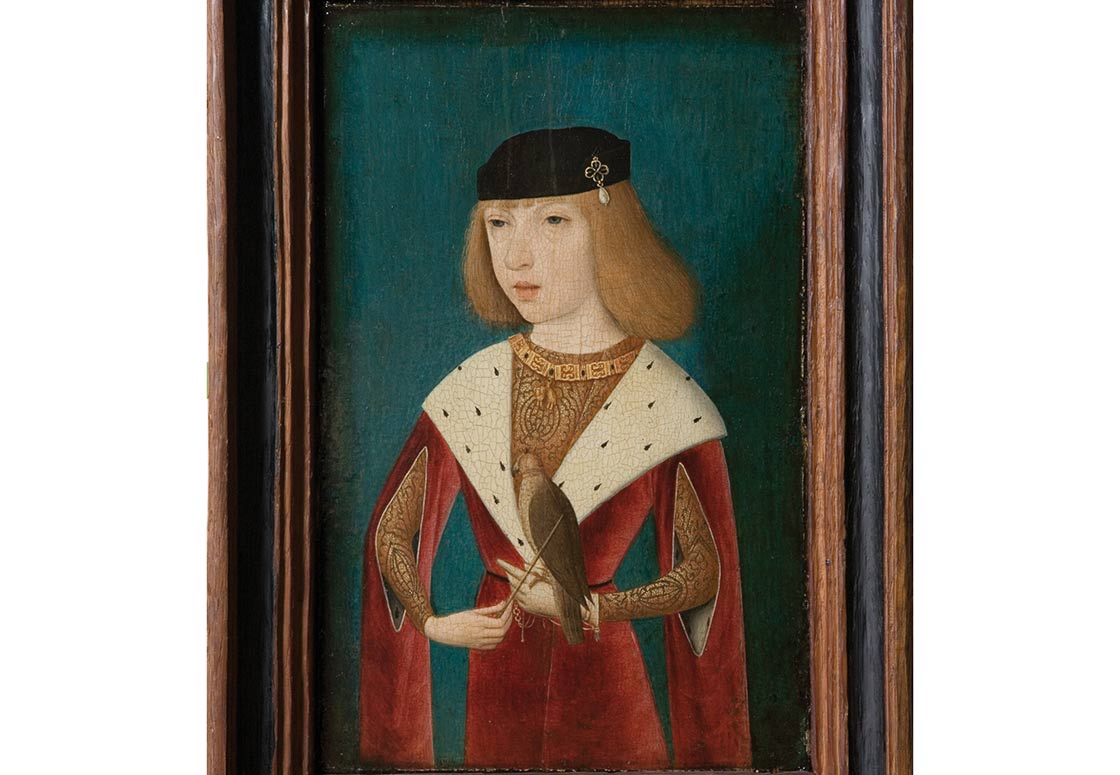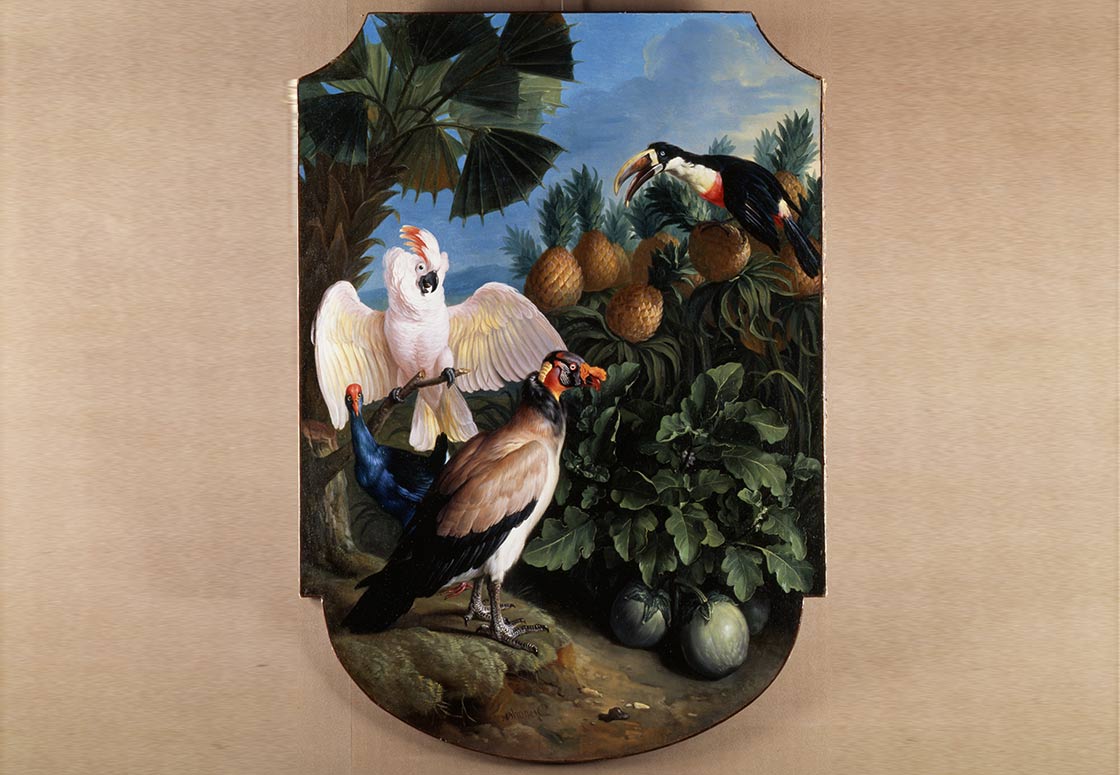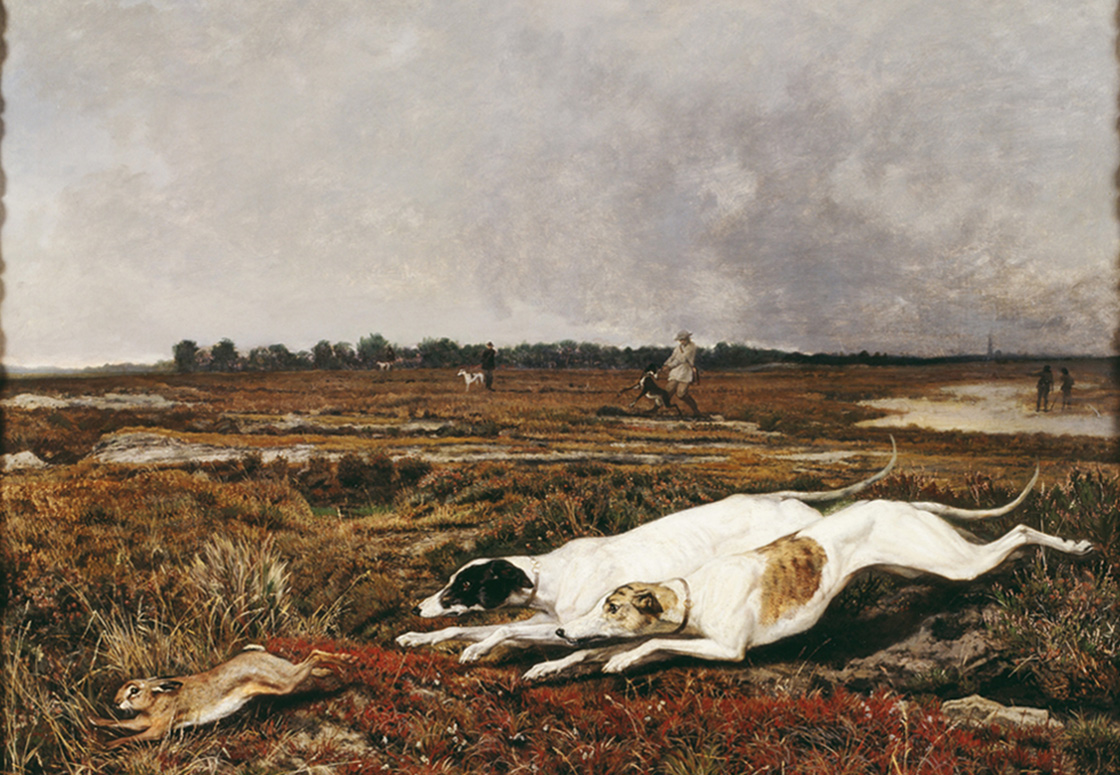Saint Eustace
Placidus, a general in the service of the Roman emperor Trajan, one day sees the head of Christ appear between the antlers of a deer he is pursuing. The deer spoke to him and invited him to convert. Placidus was then baptized and took the name of Eustace. Refusing to sacrifice to idols, he died a martyr shortly after. Devotion to Saint Eustace spread in France in the 12th century, but by the end of the Middle Ages, it declined due to competition from devotion to Saint Hubertus, whose legend was modelled on his.
In Germanic countries, this devotion remained alive well into the Middle Ages, as shown by this painting attributed to Lucas Cranach. The great German master delivers an original interpretation of a legend that expresses the cultural ambiguity consubstantial with hunting, a practice that chooses a repentant hunter as its patron saint. The scene is focused on Eustace's expression of tenderness and compassion towards his prey. The deer is strangely represented by its only severed head, in a final and tragic face to face with the hunter.


